The film photography market has been inundated with new accessory shoe light meters for the last several years. Some are revisions of previous models with lower price points and slight changes. Several are completely new and unique designs.
Choosing which model is right for your particular application can be overwhelming.
After years of using DOOMO, TTArtisans, Sekonic, and Voigtlander meters; and doing recent product tests for AstrHori, DOOMO, Hedeco, and KEKS I’ve come up with this guide to accessory shoe light meters.
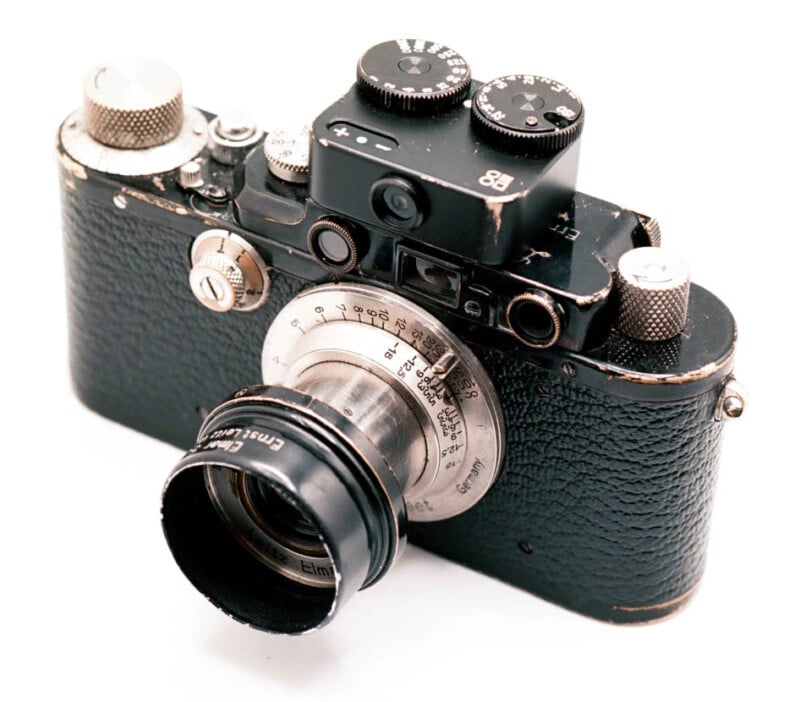
Table of Contents
What Are They?
Accessory shoe light meters are intended to be mounted to cameras or can be handheld or worn on a lanyard or wristband. They usually take 30 to 40° angle center-weighed reflected light readings and have been manufactured using a number of different information displays including swing needle, LCD, LED, and most recently, OLED panels. They have been powered by everything from solar selenium cells to mercury, alkaline, silver oxide, lithium, and rechargeable lithium batteries.
How This Review is Different
Many reviews belabor the question of accuracy of accessory shoe light meters when compared to handheld, or other built-in light meters. However, most variance can be accounted for in product parameter differences and can be accommodated with intentional use or even adjusted for some meters. Insofar as each model that I’ve tested, currently available accessory shoe light meters are all reasonably accurate and in agreement with one another within about 1 stop or closer in various lighting conditions. What differs more and I think deserves more consideration is the specific form factor of each light meter.
Therefore, rather than being a technical evaluation, this article will be more of a survey of available accessory shoe light meters with recommendations for types of photography and particular cameras for which each meter is best suited.
Meters That I Don’t Recommend
When I began this article, I was of the opinion that all accessory shoe meters available today are quality products. I wanted to give an unbiased opinion of how best to use each of them, more so than claiming one is inherently better than another. Unfortunately, it turned out that there are a few meters that I just cannot recommend.
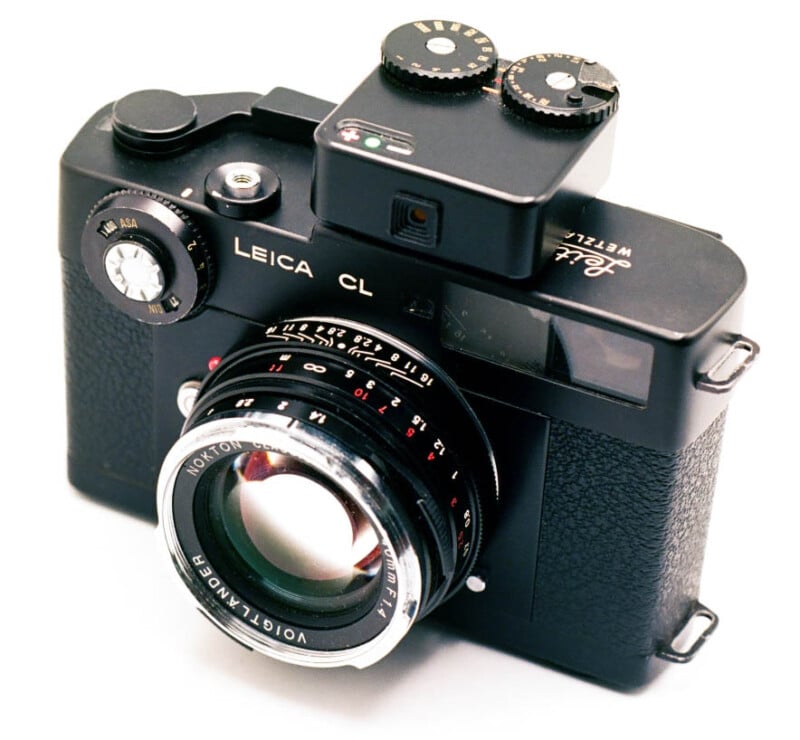
I wanted to love the TTArtisans brass meter as an affordable Voigtländer VCII alternative with higher quality materials. The TTArtisans brass meter has a beautiful finish and feels bombproof but is very large compared to similar meters. In practice, its size is tolerable but the real problems are that the ISO dial is easily changed inadvertently, and the LED is extremely faint in daylight. Additionally, the replaceable CR2032 battery died in less than a year of fairly conservative use.
When I requested a product sample of the updated TTArtisans Mark II Meter, I was told by a representative that “actually the brass light meter is better than [the] regular light meter.” After an attempt to bridge the communication problem that seemed to be occurring with the Chinese-based company, I was still unable to secure a test sample of the TTArtistans Meter II on the grounds that the older meter that I purchased, which isn’t that great, is better than the latest version.

Only days before I finalized this review, another meter that I wanted to love, the AstrHori AH-M1 broke, was discontinued and has been replaced with the AstrHori XH-2. I managed to do an ad-hoc repair of the AH-M1 but can’t recommend it due to this failure. I communicated this to AstrHori, who has been very friendly and communicative. They supplied me with an XH-2, which is very similar to the AH-M1 internally and build quality-wise. I mention the AH-M1 because this product change happened pretty recently and the AH-M1 is still available new from some distributors. But if you like the AstrHori OLED panel, clicked control wheel, and brass construction, consider the XH-2 instead.
Meters That I Didn’t Test
There are a slew of vintage and modern accessory shoe meters that I haven’t personally tested. Obviously, tracking down every vintage meter in working condition would be difficult and arguably not as useful as currently available meters for general purposes. There are also a number of nameless, modern Chinese accessory shoe meters available only on sites like eBay, Temu, and similar. I don’t get the impression that these devices are manufactured by fully scaled businesses and I’ve seen dicey reviews of a few, so I would not recommend them based on this alone.
Finally, the 3D printed plastic body and controls of the Reveni Labs Light Meter Mk.2 do not interest me because material and craftsmanship are among the reasons that I enjoy using vintage film cameras. Reveni’s products just aren’t a match for me personally. If you’re not put off by 3D-printed plastic, I certainly encourage you to check out this Canadian manufacturer’s extensive and creative offerings.
Now, let’s move on to the accessory shoe light meters that I recommend!
If the Shoe Fits
Perhaps the first matter of concern for many photographers is whether a given meter is going to physically fit their particular camera(s). Nearly every contemporary accessory shoe light meter available new today features a foot that can be unscrewed from the meter body and repositioned to fit different cameras. The only three that do not have a removable, adjustable foot are the AstrHori XH-2, KEKS KM-Q, and Reveni Labs Light Meter & Mk.2 because they don’t actually need to be repositioned.
So more than if the meter foot is adjustable, what photographers should consider is if their cameras feature any kind of tensioning mechanism on the accessory shoe and if the meter they’re interested in also does.
Earlier cameras such as screw mount Leica, Contax/Zeiss, Konica, and Kodak Retina rangefinders as well as Yashica TLRs and Voigtlander folders and many others, feature a simple “cold shoe” that does not contain any kind of ball bearings or spring clips for tensioning and holding different accessories securely. Therefore the Reflx Lab Light Meter, TTArtisans Meter & Meter II and Voigtländer VCII with their simple foot may require a cardboard wedge or bit of tape to hold the meter onto these cameras.
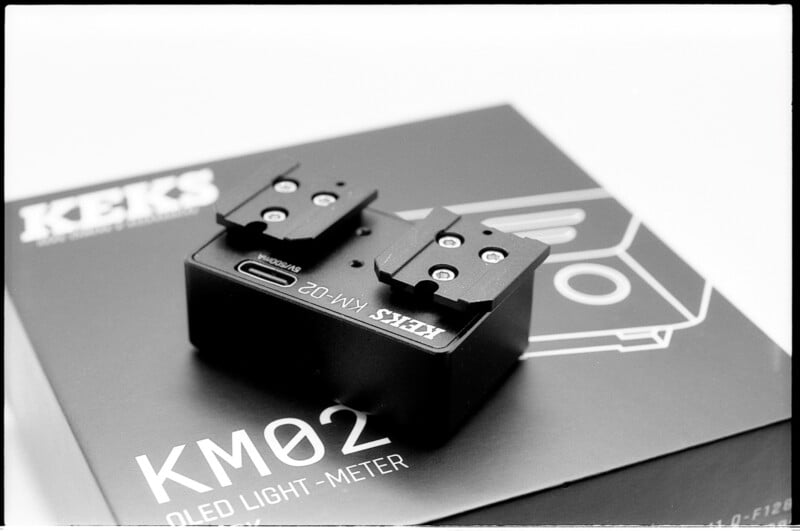
KEKS KM01C, KEKS KM02, and KEKS KM-Q also feature simple feet but come with extra plastic and aluminum feet in different thicknesses to fit various size accessory shoes. The trouble with this approach is that if you want to use one of these meters on multiple cameras, you may have to swap out the foot each time you change cameras. Not only does this feel like a waste of time, but it causes unnecessary wear to the screw threads. You could also revert to using a wedge or tape to secure these meters. In the case of the KEKS KM02, I found that I could mount a foot to either side of the meter so it could be fitted to cameras with opposite layouts without removing either foot. During the writing of this review, KEKS released its own spring-loaded foot that can be purchased separately and should solve some of these issues (if you have them.)
Current iterations of the AstrHori AH-M1, AstrHori XH-2, DOOMO Meter D, DOOMO Meter S, and Reveni Labs Light Meter Mk.2 feature spring-loaded feet that facilitate effortless installation on numerous accessory shoe types. The Hedeco Lime II features a ball-bearing tensioner that can easily be lost when changing foot position but works well otherwise. I have had no difficulty securing these meters on my earliest 1930s Leica and Contax rangefinders to my newest 1990’s Leica M6 rangefinders and 2000’s Nikon SLRs.
Perhaps the smartest meters to buy if you want to maintain the most compatibility across numerous camera types are the AstrHori XH-2, Reveni Labs Light Meter Mk.2, or KEKS KM-Q with the new foot. Because these meters are not much wider than the standard accessory shoe and their feet are spring-loaded, they should fit pretty much anything without adjustment.
Size Matters
All currently available accessory shoe light meters are very small. But whenever a photographer is mounting accessories to the limited real estate of a camera, every little bit counts. You want something small enough to fit neatly on your camera but not so small that you have difficulty controlling and reading it.
While the Reveni Labs Light Meter Mk.2 is easily the smallest meter available, one may find its diminutive controls and screen problematic, which is probably why most of the accessory shoe light meters on the market follow a rectangular format.

The KEKS KM-Q is only slightly larger than the Reveni but its four buttons are not crammed together in one cluster, rather they’ve been relocated to the sides of the meter housing and they are larger than the Reveni. All KEKS meters feature professional-looking and feeling aluminum bodies and controls so the KM-Q is my personal favorite alternative to the Reveni.
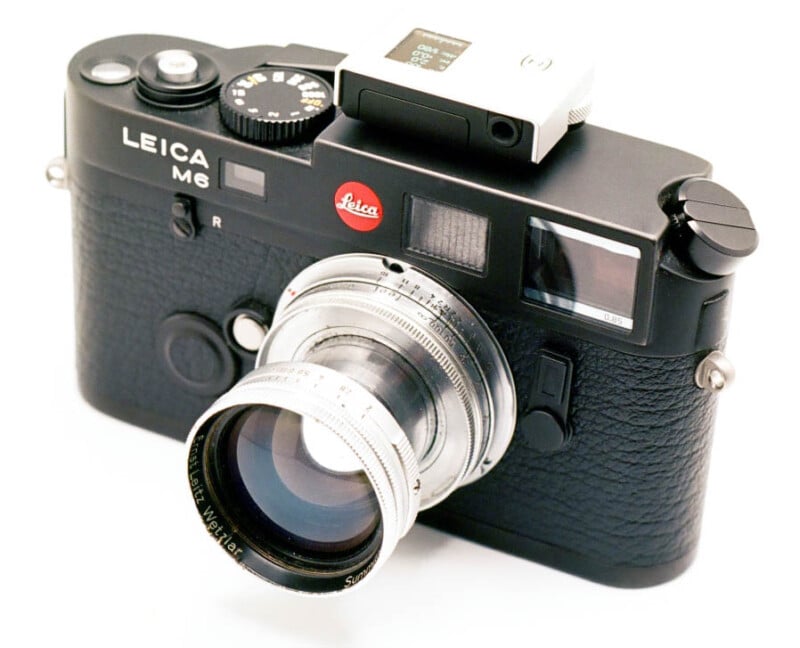
For a healthy combination of petite form factor and control, the Hedeco Lime II rivals the Reveni in having the smallest OLED meter available. Its size is flattened into a little “pizza box” shape that greatly reduces protrusion from the camera. Accessory shoe meters increase the height of the camera they’re mounted to. This can make putting the camera in a bag difficult or tight unless you remove the easily misplaced meter each time. With the Hedeco Lime II mounted, cameras fit almost as well into my camera bags as if no meter were mounted. The Lime II looks very sleek also.
The Reflx Lab Light Meter is only a little larger than the Reveni and features just two buttons instead of the four of the Reveni and KEKS KM-Q. This allows those buttons and LCD screen to be a bit larger and potentially easier to navigate/view.
Conversely, the TTArtisans Meter & Meter II are probably the largest accessory shoe meters available right now. The older TTArtisans Meter is made of thick gauge brass and is not only the largest but, heaviest meter I tested. The newer Meter II is made of aluminum and isn’t as long but is still taller than similar meters. They seem most at home on a TLR or other larger-bodied camera but are comically disproportionate on something like a half-frame camera, screw-mount Leica, or Voigtlander Perkeo. Despite their size, the TTArtisans meters don’t offer any larger display or controls than the similarly designed DOOMO Meter D or Voigtländer VCII.
Display Type
Vintage accessory shoe light meters featured swing needle displays but there are three kinds of read-out now. They are; LCD, LED, and OLED. Which display you choose depends on a few circumstances that I’ll get further into below. Suffice it to say, the main physical differences are in display size, battery consumption, and menu options.

OLED displays can be very small but this of course also reduces screen and information size. I found the DOOMO Meter S OLED panel to be the most optimal balance of small size and large, easy-to-read information with the AstrHori AH-M1 and AstrHori XH-2, which share the same panel, tied for a very close second.
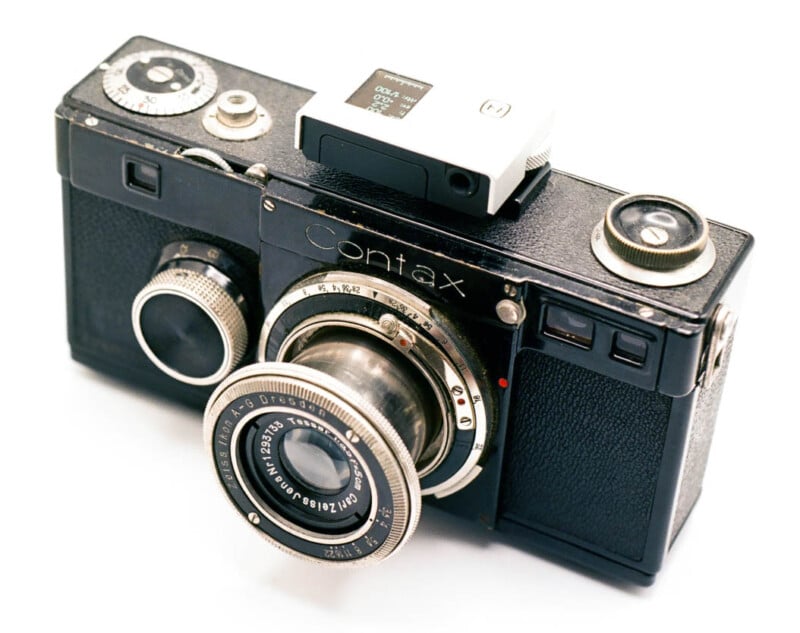
OLED displays can provide additional information such as Exposure Value. Controls and menus can be very nuanced, allowing the photographer to set stop increments, aperture or shutter priority, and a number of other customizations. The German-made Hedeco Lime II even allows its meter to be recalibrated to suit the photographer. The KEKS KM-Q can actually flip the display upside-down for use on oddball cameras like Rollei 35s with bottom-mounted accessory shoes! But these cool settings are buried in menus and I find myself having to consult the manuals to OLED meters for lesser-used settings since controls for these are less intuitive.
LED meters like the DOOMO Meter D and Voigtländer VCII don’t have any of these features but are, by the same token, easier to learn and can be used more intuitively and quickly.
Power Consumption
From a purely theoretical technical perspective, LCD and LED displays should provide the most conservative battery consumption. However, blogger Jim Grey’s LCD-type Reflx Lab Light Meter seemed to kill its single CR1632 battery within hours of use! Similarly surprising, my LED-type TTArtisans Meter required a replacement battery after less than one year of conservative use.
The LED-type Voigtländer VCII that I’ve used for over ten years takes long enough to drain its twin A76/LR44 batteries, which I think I’ve only replaced twice. Since these are very common batteries used in many popular cameras like the Pentax K1000, Nikon FM series, and Leica M’s, you only have to keep one type of spare in your camera bags.
OLED-type meters like the AstrHori AH-M1, AstrHori XH-2, DOOMO Meter S, KEKS KM01C, KEKS KM02, KEKS KM-Q, and Reveni Labs Light Meter Mk.2 use built-in rechargeable batteries more or less out of necessity. I’ve been using the DOOMO Meter S intermittently for about a year and only recently had to plug it in. I have not used the others long enough to require their first recharge.

The KEKS KM-Q goes into a power save sleep but takes a bit longer than I’d like to wake up. Because it is such a small meter, it does not display the ISO at all times, instead, it shows the ISO for a prolonged time while starting up which I find annoying to sit through nearly every time I want to take a reading. So while the KM-Q is good for universal fit, it is not ideal for speedy use.
The Hedeco Lime II is the only current OLED meter that takes a replaceable CR2032 button cell battery. It also has a unique feature to conserve electricity – the display actually dims automatically in lower light. If you prefer an OLED with a long-lasting, replaceable battery, this meter’s for you.
On Top or in the Rear?
Vintage accessory shoe light meters featured top-mounted displays. And so do modern two-dial LED meters like the DOOMO Meter D, TTArtisans Meter & Meter II, and Voigtländer VCII.
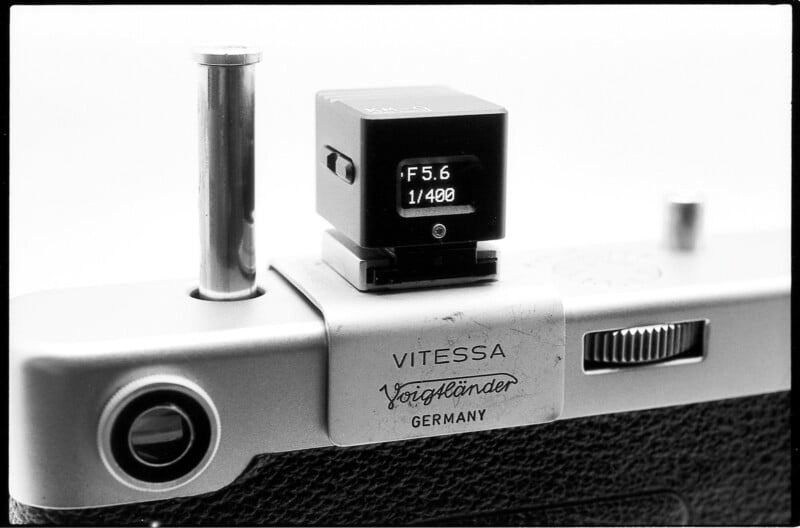
But with OLED you have a choice. In fact, the KEKS KM-Q is the only model of accessory light meter that you can actually order a top-mounted display or rear-mounted version. Other OLED models situated the display on top or in the rear only.
Why does it matter?
With a top-mounted display, candid and casual photography is made that much easier because reading exposure does not require lifting the camera to the eye and calling attention to the fact that a photo is about to be taken.

But top-mounted LED and OLED displays are not always readable in bright sun. The Voigtländer VCII is the most visible two-dial meter, requiring very little shading with one’s hand. And no OLED meters are fully visible in bright sun. This makes models with rear-mounted displays such as the KEKS KM01C, KEKS KM02, KEKS KM-Q, and Reveni Labs Light Meter Mk.2 smart purchases for those who are not doing as much candid and walk-around photography but are often shooting in bright sun. Their rear-mounted displays guarantee better shading or are easier to shade with one’s hand without interfering with the light sensor.
When the Sun Goes Down
What meters work best in bright sun may not be so great at night. While LEDs on two-dial meters can be seen in the dark, their exposure numbers cannot. While numbers on the Reflx Lab Light Meter are seen on an LCD panel, it’s not backlit so the meter is of no use after sunset either. The EV ranges of all these meters are greater than their low light visibility, so one could paint the inscribed numbers of the DOOMO Meter D or Voigtländer VCII with glow paint or shine a flashlight onto them, but these solutions aren’t as easy or elegant as simply choosing an OLED meter for concerts and other night time photography.
What Are You Made of?
Original vintage accessory shoe meters of the 1950s were made of brass and finished in thick satin chrome, but seldom are we treated to this level of luxury today. The Reveni Labs Light Meter Mk.2 is like the Model T of light meters – you can have it your favorite color so long as your favorite color is black 3D printed plastic. Brass is of course a higher regarded metal than aluminum due to being more hard-wearing and it is a better match for many of our classic cameras too. With use, the black paint will wear down to expose the bright brass underneath like a photojournalist’s camera.

Both the AstrHori AH-M1 and XH-2 are made of brass. TTArtisans makes the first version of their meter in brass and DOOMO offers both the Meter D and Meter S in black painted brass.
The downside to brass accessory shoe meters, however, is the weight. They are tiny but very dense and add considerable weight to your camera. Aluminum, which all but the AstrHori and Reveni come in, is a better option if you want a lightweight package or are using a silver-colored camera body. I do fear their durability in the event of an impact though.
Go Long!
Two-dial type meters like the DOOMO Meter D, TTArtisans Meter & Meter II, and Voigtländer VCII only go down to one-second shutter speeds. If you’re doing something like astrophotography and need extended shutter times, you should use an OLED meter not only for the wider metering range but also so you can actually see the display in the dark, unlike the Reflx Lab Light Meter, which goes down to 30-second exposures but doesn’t have a lit screen. Most OLED meters only go down to 30 seconds. However, the Reveni Labs Light Meter Mk.2 goes down to one full hour and the Hedeco Lime II can measure to an unbelievable 8 hours and 20 minutes! I’m not sure what anyone needs that for by hey, there you go! The maximum shutter times for the others are listed below:
AstrHori AH-M1 and XH-2 (:30sec), DOOMO Meter S (:30sec), Hedeco Lime I & II (8hrs :20min), KEKS KM01C (:30sec), KEKS KM02 (:30sec), KEKS KM-Q (:30sec)
I Have the Power!
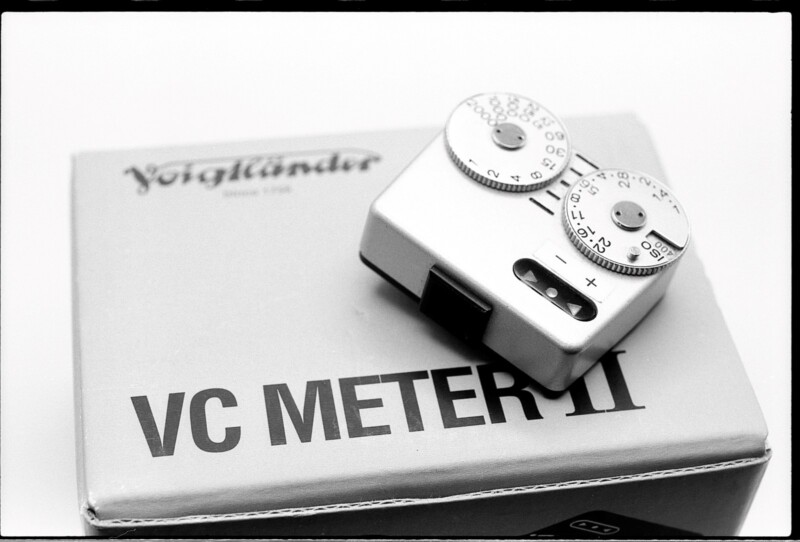
It’s convenient to use an accessory light shoe meter that is powered by the same button cell battery as most of our metered classic cameras. The Voigtländer VCII is the only current model that uses two common A76/LR44 type silver oxide batteries. Not only is this convenient but it guarantees that the exact specification battery will likely continue to be widely available for years to come. The other meters that use disposable batteries employ a CR1632 or CR2032, for which I don’t have any other camera equipment that is compatible.
A question that many people have asked me while I’ve been testing these meters is what the life expectancy and ability to replace the battery inside rechargeable meters. Unfortunately, most of these meters haven’t been around long enough for anyone to do extended-use testing.
What I can say about the DOOMO Meter S specifically is that I’ve owned it for over a year and use it a few days out of each month but only recently did I have to recharge it – very good for an OLED meter. If battery life is a priority though, I am convinced that the Voigtländer VCII is your best bet.
Meter vs Meter
A few of the currently available accessory shoe light meters are strikingly similar to one another so I wanted to do a quick comparison between these.
There are just three two-dial LED meters on the market right now and their differences are subtle. The only thing that’s not subtle is the proven track record of the Voigtländer VCII which has been produced for over a decade and has demonstrated infallible reliability for photographers in this time. I’ve seen some very heavily abused VCII’s but I can’t remember ever having seen a copy that doesn’t work. Mine has been in regular use for about ten years without issue. This might make it seem like a slam dunk choice, but not only do the DOOMO Meter D and TTArtisans Meter & Meter II cost less than half the price of the VCII, they add a few welcomed changes.
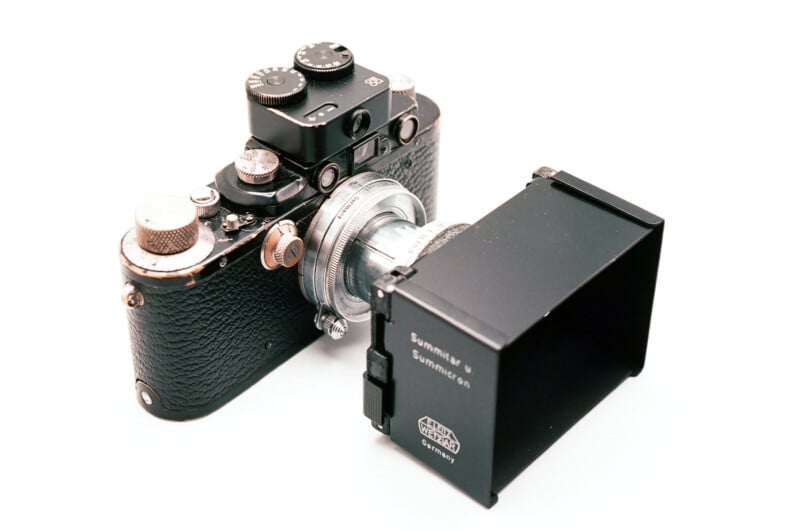
Both the DOOMO Meter D and TTArtisans Meter are available in superior brass construction and have a more squared-off shape making them a little more cosmetically attractive, and even more durable than the unspecified metal and plastic construction Voigtländer VCII on which they are based.
A very thoughtful and useful upgrade on the DOOMO Meter D and TTArtisans Meter & Meter II is the simple addition of + and – signs on the meter read-out. When you’re jumping around from different meters, the VCII’s basic pointing triangles can be confusing (to me anyway). I long ago applied a small + – label to my VCII but it’s nice that the DOOMO and TTArtisans alleviate any guessing out of the box.
The position of the mounting foot on the TTArtisans Meter & Meter II is adjustable but the foot itself is simple, without any tensioning mechanism like the original Voigtländer VCII. However, the DOOMO Meter D foot features spring clips that allow it to work very well with earlier cameras that have simple accessory shoes.
Because the ISO dial tends to slip out of place on the TTArtisans Meter, I keep a bit of tape on it to hold it in place. And as mentioned the LEDs aren’t as bright as the Voigtländer VCII and DOOMO Meter D. The TTArtisans Meter & Meter II also fail in that the exposure settings appear to be printed on, rather than engraved into the dials. With wear, these could become unreadable. The Voigtländer VCII and DOOMO Meter D numbering is engraved into the metal and should be legible even if the paint or surface of the dials are rubbed down.
Meters for 35mm SLRs
Up until now, most of my comments revolve around 35mm rangefinders. There’s probably not a lot of need to discuss how these meters fit on 35mm SLRs because let’s face it, they all look totally ridiculous mounted atop a pentaprism. But from a functional standpoint, any of these meters will fit and allow room to work the controls of the camera when mounted to an SLR. So for 35mm SLRs, you are pretty much free to choose whatever meter you like!
Nikon F and F2 cameras, however, do not feature their accessory shoe atop their prism heads. Rather, Nikon made removable shoes that fit onto the film rewind crank assembly. Smartly, DOOMO sells its version of this removable shoe.

Meters and Mounting for Medium Format
But what about medium format cameras like SLRs, rangefinders, and TLRs?
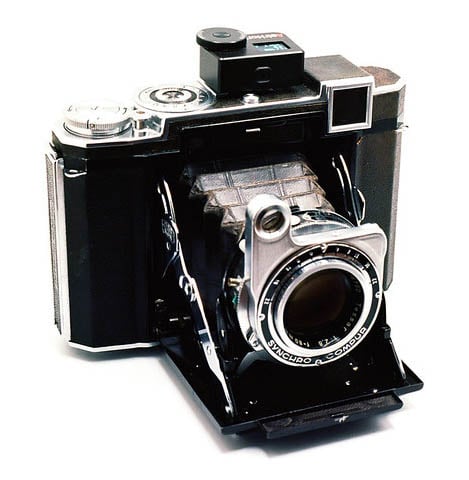
Rolleiflex-style twin lens reflex cameras locate their accessory shoes on the side. I didn’t find a single meter that did not fit the side mount of my Yashica A. Since the camera is larger, the size and form factor of the meter are of much less concern than it is on a 35mm rangefinder. However, the Yashica’s accessory shoe is attached to the camera reverse standard 35mm cameras, meaning that the meter must be slid into the front of the shoe with the stop that prevents it from sliding out located towards the back of the camera. This is where the otherwise smart spring-clip feet of the DOOMO and AstrHori meters met a problem. I had to reverse mount the foot of these meters in order to install them on the Yashica. But all the other meters slip in fine, though some, like the Voigtländer VCII, require a bit of tape or cardboard to hold them in place.
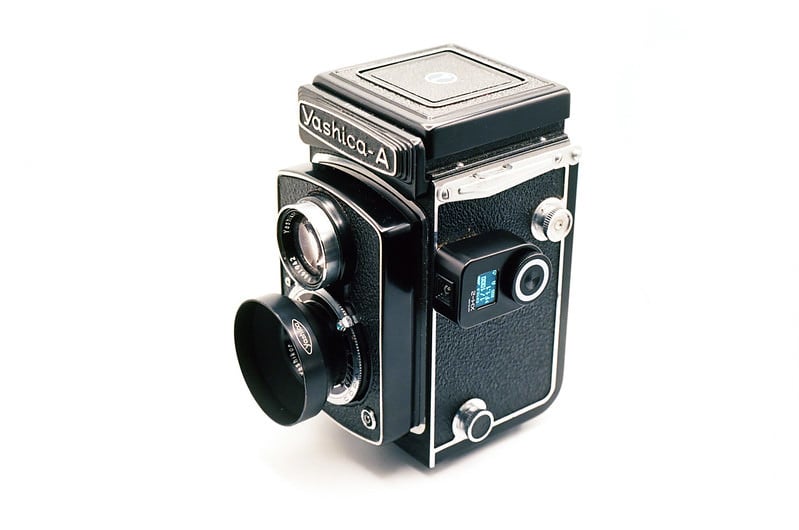
The other concern with the side-mounted shoes of TLRs is that of course the top of the meter is now oriented at a right angle from the viewfinder. So I got into the habit of rotating my camera on its side to take a reading and rotating it back for all other operations.
If this sounds silly, there are solutions! DOOMO, Hedeco, KEKS, and Reveni also sell various accessories that facilitate mounting their light meters in unusual, but useful, ways. This includes right-angle-mounting shoes for TLRs and even stick-on shoes for cameras such as Hasselblad medium format SLRs that feature no accessory shoe. Or even Hasselblad and Rollei/Yashica lens hoods with accessory shoe mounts. There are also double accessory shoes and even wristbands, rings, and lanyards for wearing your light meter. Hedeco and Reveni’s solutions are 3D printed plastic while DOOMO and KEKS’ solutions are made of metal. Click on each manufacture’s name in this section for a linkback to their inventive accessory lists.
Personal Pick and Conclusion
Many people have been asking me what accessory light shoe meter is my favorite.
I have used and loved the Voigtländer VCII longer than any other but the low light capability of OLED meters tempted me to move on and compile this article. Surprisingly, I found that I really don’t like the complication of any of the newer OLED designs, clever and useful though they are. I greatly prefer the quick, intuitive two-dial type meter where all potential settings can be seen and understood at a glance and adjusted effortlessly. The DOOMO Meter D keenly addresses all of the minor concerns I have with the Voigtländer VCII while adding all brass construction as an option and a much lower cost. It’s become my most-often used accessory light meter.
We’ve covered a lot of ground since the top of this article where I mentioned that you might be overwhelmed with all the accessory shoe light meter choices on the market. I couldn’t discuss every nuance about every product here but I have tried to condense months, and years in some cases, of experience with each of these meters into a concise and useful guide.
I hope that you’ll be able to find the right meter, or meters, for your particular applications without having to spend all the time that I have in coming to these conclusions. Surely there are some uses that I might have missed, but I invite readers to provide more insight in the comments section and help inform everyone who’s interested in adding accessory shoe light meters to their go-to gear list.
Many thanks to representatives from AstrHori, DOOMO, Hedeco, and KEKS for all your help!
About the author: Johnny Martyr is an East Coast film photographer. The opinions expressed in this article are solely those of the author. After an adventurous 20-year photographic journey, he now shoots exclusively on B&W 35mm film that he painstakingly hand-processes and digitizes. Choosing to work with only a select few clients per annum, Martyr’s uncommonly personalized process ensures unsurpassed quality as well as stylish, natural & timeless imagery that will endure for decades. You can find more of his work on his website, Flickr, Facebook, and Instagram.
